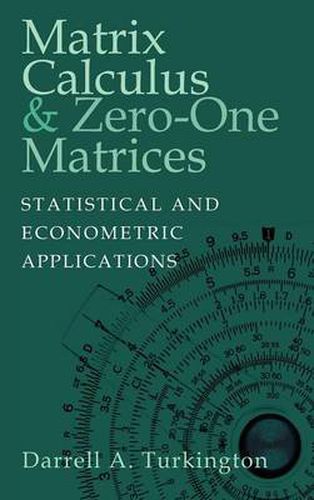Readings Newsletter
Become a Readings Member to make your shopping experience even easier.
Sign in or sign up for free!
You’re not far away from qualifying for FREE standard shipping within Australia
You’ve qualified for FREE standard shipping within Australia
The cart is loading…






This presents the reader with mathematical tools taken from matrix calculus and zero-one matrices and demonstrates how these tools facilitate the application of classical statistical procedures to econometric models. The matrix calculus results are derived from basic rules which are generalizations of the rules of ordinary calculus. These results are summarized in a table. Well-known zero-one matrices together with some new ones are defined, their mathematical roles explained and their properties presented. The basic building blocks of classical statistics, namely, the score vector, the information matrix and the Cramer-Rao lower bound, are obtained for a sequence of linear econometric models of statistical complexity. From these interactive interpretations of maximum likelihood estimators are obtained linking them with efficient econometric estimators. Classical test statistics are also derived and compared for hypotheses of interest.
$9.00 standard shipping within Australia
FREE standard shipping within Australia for orders over $100.00
Express & International shipping calculated at checkout
This presents the reader with mathematical tools taken from matrix calculus and zero-one matrices and demonstrates how these tools facilitate the application of classical statistical procedures to econometric models. The matrix calculus results are derived from basic rules which are generalizations of the rules of ordinary calculus. These results are summarized in a table. Well-known zero-one matrices together with some new ones are defined, their mathematical roles explained and their properties presented. The basic building blocks of classical statistics, namely, the score vector, the information matrix and the Cramer-Rao lower bound, are obtained for a sequence of linear econometric models of statistical complexity. From these interactive interpretations of maximum likelihood estimators are obtained linking them with efficient econometric estimators. Classical test statistics are also derived and compared for hypotheses of interest.